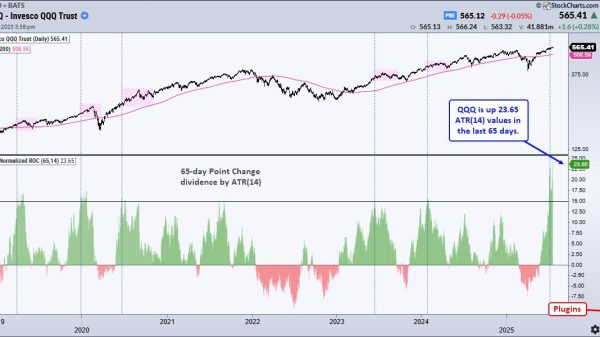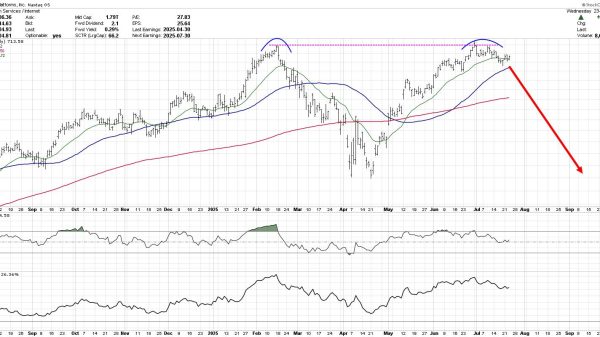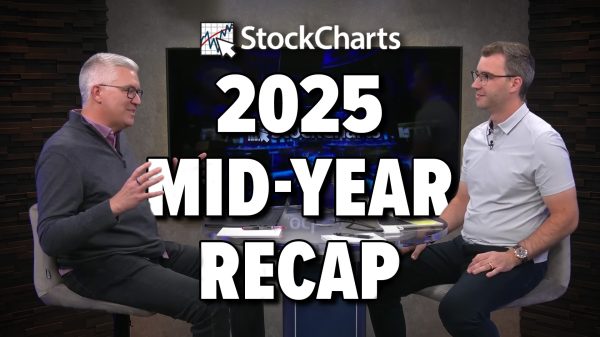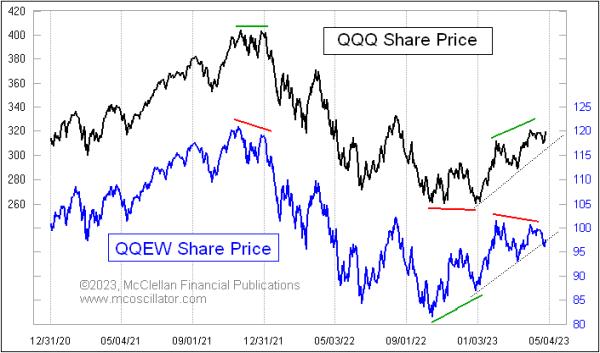Earnings news from big cap Nasdaq stocks like Microsoft (MSFT) and Meta (FB, used to be Facebook) have been pushing up the capitalization-weighted indices, as well as the share price of QQQ, the ETF which tracks the Nasdaq 100 Index. In those cap-weighted indices, the behaviors of the big-cap stocks matter a whole lot more toward the calculation of the index value. But the behaviors of the other components can tell us more about the health of the liquidity available to lift all stocks.
The ETF QQEW owns the same stocks as QQQ, but weights them all equally, as opposed to by total capitalization. Most of the time, QQEW does the same things that QQQ does, which is what you would expect. But sometimes they disagree, and, when that happens, the message from QQEW usually ends up being right about where both ETFs are headed.
This is relevant right now because, in early 2023, QQEW has shown us a bearish divergence, making a lower price top even though QQQ has made a higher price top. QQEW has also broken its rising bottoms line, then pulled back up to test the underside of it. QQQ, by comparison, is sailing along happily above its equivalent uptrend line, blissfully ignorant of troubles among the lesser components.
Within this week’s chart, I have highlighted a couple of other notable divergences between QQEW and QQQ. If the chart were to show data further back in time (which would involve cramming in more data, making it difficult to see), we could find even more of these divergences.
The reason why comparisons like this one, or comparisons between a major index and an Advance-Decline Line, can be useful is that the big cap stocks will not detect liquidity problems as well as the lesser issues. I liken this to the way that a healthy sow can nurse a whole litter of piglets really well.
But if she is a poor milk producer, the biggest piglets may be able to muscle their way in to get the milk they need, while the runts will go hungry. Eventually that poor milk production can affect the big piggies, but watching the health of the runts is going to give a better message about milk production.
So it goes with the stock market. The big-cap tech stocks are the big piggies, able to muscle their way in to get buyers during a condition of poor liquidity. But the runts of the stock market will suffer first, and this shows up as weaker performance for things like small cap stocks, and high yield bonds. It also shows up as differential performance among the component stocks of an index like the Nasdaq 100. The message of the current divergence is that liquidity is poor, which is a message that the behavior of Microsoft and Meta will not convey until much later.
























